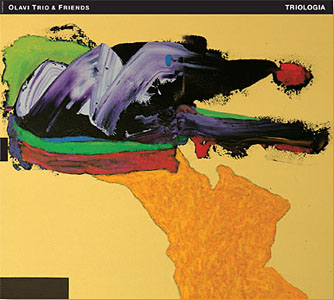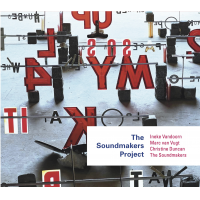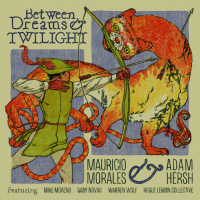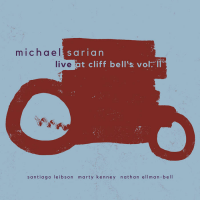Home » Jazz Articles » Extended Analysis » Michael Gibbs and the NDR Bigband: Michael Gibbs and the...
Michael Gibbs and the NDR Bigband: Michael Gibbs and the NDR Bigband: Back in the Days
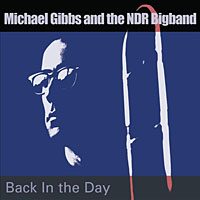 Michael Gibbs and the NDR Bigband
Michael Gibbs and the NDR BigbandBack in the Days
Cuneiform Records
2012
Jazz may be filled with reharmonizations, reinventions and reimaginings of songs from across its entire history; few artists have, however, made their names solely as composers and arrangers. Relative youngsters like Maria Schneider, Vince Mendoza and Darcy James Argue have successfully shaped careers focused exclusively on the other side of the performance table, but when it comes to legacy artists, the name Gil Evans is the one that crops up more often than not—no surprise, given his classic work with trumpeter Miles Davis on albums like Sketches of Spain (Columbia, 1960). But there are others who've been shaping music for large ensembles in ways that are no less definitive and just as personal.
Michael Gibbs is one such figure. With far too many of his relatively few recordings as a leader out of print, Back in the Days serves as a welcome reminder that the nearly 75 year-old Gibbs is still with us, and still making terrific music. Collecting a dozen tracks from five sessions over the course of eight years (1995-2003), it's also a chance to recall why artists like vibraphonist Gary Burton, saxophonist Stan Getz and singer Norma Winstone have chosen to work with the composer/arranger over the half-century span of his career.
Born in Zimbabwe (then Rhodesia), Gibbs' work in both the US and UK never achieved the same name recognition that Evans enjoyed on a broader scale, though if there is single period where he seemed to be on a career high, it was from 1970-75, when he released a series of albums, beginning with Michael Gibbs (1970) and the heralded Tanglewood 63 (1971) (both on Deram), through to 1975's jazz-rock masterpiece, The Only Chrome Waterfall Orchestra (Bronze) and Seven Songs for Quartet and Chamber Orchestra (ECM)—the latter, his second full collaboration with Burton after 1974's even more eclectic In the Public Interest (Polydor).
With one look at the list of musicians recruited on these albums and later titles including Big idea (Venture, 1988) and Nonsequence (Provocateur, 2001), it's clear that Gibbs has garnered respect rare amongst such an international bevy of players—in addition to Burton, also including bassist Steve Swallow, guitarists John Scofield, Bill Frisell and Philip Catherine, saxophonist Charlie Mariano and Bob Mintzer, and trumpeters Kenny Wheeler and Ian Carr. Few of Back in the Days' Norddeutscher Rundfunk (NDR) Bigband members are big names, though fans of pianist John Taylor will recognize drummer Martin France on the 2003 date, while those who've followed guitarist John McLaughlin's 4th Dimension band will know drummer Mark Mondesir from a session in early 2002.
Still, with Burton in tow for three tracks from 1995—including "Country Roads," an ambling blues co-written with Swallow that first appeared on the vibraphonist's Country Roads & Other Places (RCA, 1969)—there's at least some star power to attract those who need it, though every soloist from the five shifting lineups of Germany's NDR Bigband represented here is world class and worthy of attention. Gibbs' "Mosher" is a soft ballad that, in addition to an atmospheric solo from Burton, features Christof Lauer, the primary soloist on another ethereal Gibbs piece from a later date, the miniature tone poem "Antique," the tenor saxophonist blowing with surprising power and abandon to contrast with the compositions' more rarefied nature.
Burton's performances on "Country Roads" and, in particular, Gibbs' bright opener, "The Time Has Come," raise plenty of questions about who exactly defined the vibraphonist's late 1960s to mid-'70s recordings. The ultimate answer is, of course, a complicated one, clearly the confluence of a number of factors, ranging from Burton's own emergent voice; his empathetic relationship with Steve Swallow; his choice of guitarists Larry Coryell, then Mick Goodrick, and, later, the Goodrick-informed Pat Metheny (before his own voice emerged, as it did rapidly) once he made the move from RCA to ECM; and Gibbs' role as both an arranger and composer, with Burton drawing from the his gradually expanding songbook as early as Duster (RCA, 1967) and, with greater visibility, on later ECM dates like Ring (1974) and Picture This (1982). Here, in this 1995 session with guitarist Stephan Diez soloing at length after the ever-impeccable Burton, it's crystal clear that the vibraphonist's early days were shaped by all these factors, with Goodrick a clear touchstone for Diez, but the harmonic landscape over which Diez solos irrefutably defined by Gibbs' unmistakable voice.
Elsewhere, three recordings from 2002 demonstrate Gibbs' acumen at arranging well-known standards, in particular a version of "'Round Midnight" that, rather than using mid-1950s Miles Davis as its source, looks a decade later to the trumpeter's mid-'60s group, lending it a more modernistic edge while retaining the gentle groove that, as Gibbs explains in the liners, "lies so comfortably in the lap of the band."
With Back in the Days, Cuneiform continues its important rescue of vital music from UK (or, in the case of Gibbs, UK-based) artists ranging from recently deceased composer/arranger Graham Collier to saxophonist John Surman and bassist Henry Miller. With the most recent session on Back in the Days dating nearly a decade ago, the album dovetails perfectly with Gibbs' more recent collaboration with Norma Winstone on Here's a Song for You (Fuzzy Moon, 2011). Individually and together, both recordings serve as a welcome reminder of Gibbs' important place in the history of jazz composers and arrangers—but one who remains absolutely active and deserving of praise and visibility now, while he is, very thankfully, still with us.
Tracks: The Time Has Come; Back Where I Belong; June the 15th, 1967; Tennis, Anyone?; Jail Blues; Antique; Here's That Rainy Day; I Want to Talk About You; 'Round Midnight; With All Due Respect; Mosher; Country Roads.
Personnel: Michael Gibbs: arrangements, conductor; Lennart Axelsson: trumpet (1-6, 11-12); Ingolf Burkhardt: trumpet; Johannes Faber: trumpet (1, 11-12); Reinder Winerschladen: trumpet; Joe Gallardo: trombone; Wolfgang Ahlers; trombone (1, 11-12); Egon Christmann: trombone (1, 11-12); Lucas Schmid: bass trombone (1, 11-12); Fiete Felsch: alto saxophone; Peter Bolte: alto saxophone; Christof Lauer: tenor saxophone; Lutz Büchner: tenor saxophone; Thomas Zoller: baritone saxophone (1, 11-12); Stephan Diez: guitar (1, 2, 7-9, 11-12); Lucas Lindholm: bass; Thomas Alkier: drums (1, 11-12); Dirk Lentschat: trumpet (10); Claus Stötter: trumpet (2-10); Dan Gotshall: trombone (2-10); Stephan Lotterman: trombone (2-6, 10); Ingo Lahme: bass trombone (2-10); Frank Delle: baritone saxophone (2-10); Simon Nabitov: piano (10); Ed Harris: guitar (10); Ian Thomas: drums (7-10); Vladyslav Sendecki: piano (2-9); Mark Mondesir: drums (3-6); Marcio Doctor: percussion (2-9); Rüdiger Baldauf: trumpet (7-9); Jon Welch: trombone (7-9); Martin France: drums (2); Gary Burton: vibraphone (1, 11, 12).
Track Listing
The Time Has Come; Back Where I Belong; June the 15th, 1967; Tennis, Anyone?; Jail Blues; Antique; Here's That Rainy Day; I Want to Talk About You; 'Round Midnight; With All Due Respect; Mosher; Country Roads.
Personnel
Michael Gibbs
tromboneMichael Gibbs: arrangements, conductor; Lennart Axelsson: trumpet (1-6, 11-12); Ingolf Burkhardt: trumpet; Johannes Faber: trumpet (1, 11-12); Reinder Winerschladen: trumpet; Joe Gallardo: trombone; Wolfgang Ahlers; trombone (1, 11-12); Egon Christmann: trombone (1, 11-12); Lucas Schmid: bass trombone (1, 11-12); Fiete Felsch: alto saxophone; Peter Bolte: alto saxophone; Christof Lauer: tenor saxophone; Lutz Büchner: tenor saxophone; Thomas Zoller: baritone saxophone (1, 11-12); Stephan Diez: guitar (1, 2, 7-9, 11-12); Lucas Lindholm: bass; Thomas Alkier: drums (1, 11-12); Dirk Lentschat: trumpet (10); Claus Stötter: trumpet (2-10); Dan Gotshall: trombone (2-10); Stephan Lotterman: trombone (2-6, 10); Ingo Lahme: bass trombone (2-10); Frank Delle: baritone saxophone (2-10); Simon Nabitov: piano (10); Ed Harris: guitar (10); Ian Thomas: drums (7-10); Vladyslav Sendecki: piano (2-9); Mark Mondesir: drums (3-6); Marcio Doctor: percussion (2-9); Rüdiger Baldauf: trumpet (7-9); Jon Welch: trombone (7-9); Martin France: drums (2); Gary Burton: vibraphone (1, 11, 12).
Album information
Title: Michael Gibbs and the NDR Bigband: Back in the Days | Year Released: 2012 | Record Label: Cuneiform Records
Tags
PREVIOUS / NEXT
Support All About Jazz
 All About Jazz has been a pillar of jazz since 1995, championing it as an art form and, more importantly, supporting the musicians who make it. Our enduring commitment has made "AAJ" one of the most culturally important websites of its kind, read by hundreds of thousands of fans, musicians and industry figures every month.
All About Jazz has been a pillar of jazz since 1995, championing it as an art form and, more importantly, supporting the musicians who make it. Our enduring commitment has made "AAJ" one of the most culturally important websites of its kind, read by hundreds of thousands of fans, musicians and industry figures every month.



